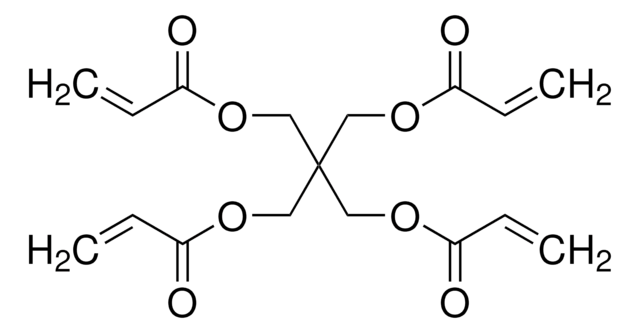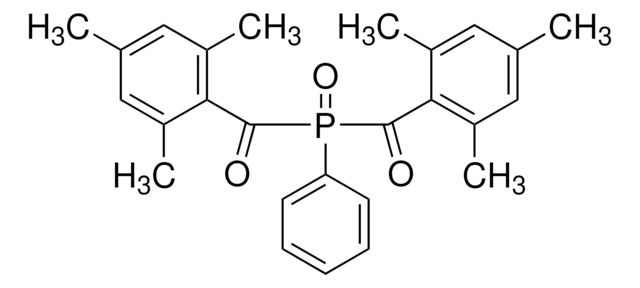409073
Trimethylolpropane ethoxylate triacrylate
average Mn ~428
Synonym(s):
Ethoxylated trimethylolpropane triacrylate, Polyethylene glycol trimethylolpropane ether triacrylate
About This Item
Recommended Products
form
liquid
Quality Level
mol wt
average Mn ~428
refractive index
n20/D 1.471 (lit.)
bp
157 °C (lit.)
density
1.11 g/mL at 25 °C
SMILES string
CCC(COCCOC(=O)C=C)(COCCOC(=O)C=C)COCCOC(=O)C=C
InChI
1S/C21H32O9/c1-5-18(22)28-12-9-25-15-21(8-4,16-26-10-13-29-19(23)6-2)17-27-11-14-30-20(24)7-3/h5-7H,1-3,8-17H2,4H3
InChI key
MTPIZGPBYCHTGQ-UHFFFAOYSA-N
Looking for similar products? Visit Product Comparison Guide
Related Categories
General description
Application
- As a cross-linking agent or a polymerizable monomer in the preparation of gel polymer electrolyte for Lithium-ion batteries. It enhances the thermal stability, ionic conductivity, and mechanical strength of the polymer.
- As a monomer to prepare UV-curable resins via vat photopolymerization, for stereolithography (SLA) and digital light processing (DLP). These techniques have potential applications in the 3D printing of medical devices, soft robots, dental implants, Optical adhesives, and microfluidic devices.
- To synthesize inverse micropatterned photonic crystal (PhC) films via photopolymerization for the detection of alcohol content in water.
Signal Word
Warning
Hazard Statements
Precautionary Statements
Hazard Classifications
Aquatic Chronic 3 - Eye Irrit. 2 - Skin Sens. 1B
Storage Class Code
10 - Combustible liquids
WGK
WGK 1
Flash Point(F)
235.4 °F - closed cup
Flash Point(C)
113 °C - closed cup
Personal Protective Equipment
Choose from one of the most recent versions:
Already Own This Product?
Find documentation for the products that you have recently purchased in the Document Library.
Customers Also Viewed
Global Trade Item Number
| SKU | GTIN |
|---|---|
| 409073-1L | |
| 409073-250ML | 4061831989076 |
Our team of scientists has experience in all areas of research including Life Science, Material Science, Chemical Synthesis, Chromatography, Analytical and many others.
Contact Technical Service













